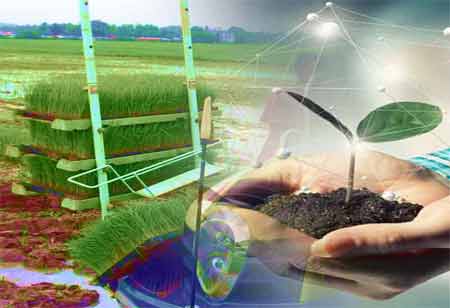Thank you for Subscribing to Agri Business Review Weekly Brief
Agricultural Finance Ensures Smooth Functioning of Agricultural Operations
Low commodity prices, erratic weather patterns, heightened competition, chaos in international commerce, and COVID-19 have made the past few years especially difficult for agricultural enterprises.

By
Agri Business Review | Friday, April 12, 2024
Stay ahead of the industry with exclusive feature stories on the top companies, expert insights and the latest news delivered straight to your inbox. Subscribe today.
Agricultural finance is crucial in helping farmers manage their financial realities and ensure their continued success.
FREMONT, CA: Low commodity prices, erratic weather patterns, heightened competition, chaos in international commerce, and COVID-19 have made the past few years especially difficult for agricultural enterprises. These conditions are predicted to persist despite sporadic government relief initiatives.
Agricultural finance simplifies agribusiness financial issues. It facilitates improved debt and cash flow management by assisting in evaluating the impacts of local and global influences on operations.
Debt is crucial for businesses to manage cyclical ups and downs, from short-term borrowings to long-term loans for capital equipment. However, when debt levels outnumber peaks, it's essential to control borrowing to prevent debt load and payments from spinning out of control. Due to low lending rates and rising farm values, farm debt levels have increased in recent years. Farmers are now reassessing debt's role in their financial life, examining it closely and exploring ways to reduce it. To do this, run a full inventory of all active loans, including borrowed, owed, note holders, loan duration, payment frequency, and interest rate. Create a list of assets and an income statement showing revenues and expenses, including loan payments. If costs exceed income, reduce expenses or boost revenues.
As income is largely driven by commodity prices, consider reducing reliance on operating debt, refinancing higher-rate debt, consolidating smaller loans, and aligning payment schedules to better match due dates with periods with higher cash flows. If making a large purchase in the coming year, carefully weigh the potential returns to ensure profit after covering loan payments and operational expenses.
Working capital is essential to a farm's performance since it consists of cash and current assets, which may be sold rapidly, and current liabilities or debts that must be paid off within the next 12 months. With reserves added during prosperous periods, it should cover between 20% and 50% of operational expenses. Reduce family living budgets, sell unused equipment, adjust marketing strategies to shift financial inflows and outflows, and concentrate on crops, animals, and enterprises that produce consistent revenue streams to protect working capital. It is imperative to maintain a stable cash flow to prevent adding new capital assets.





